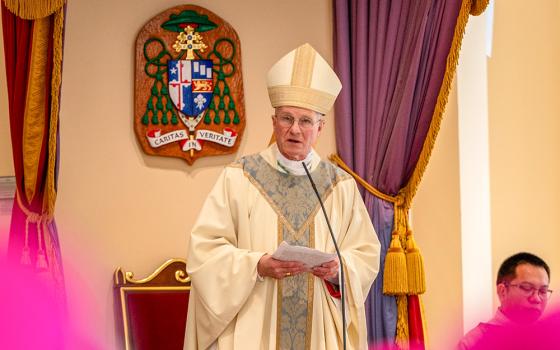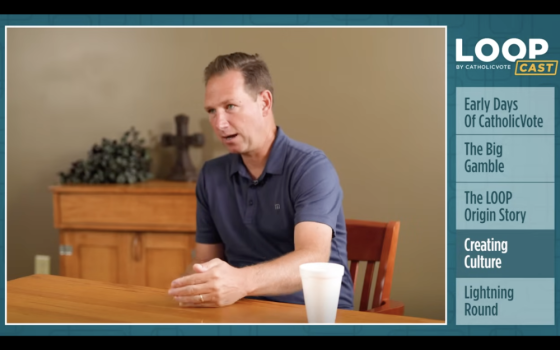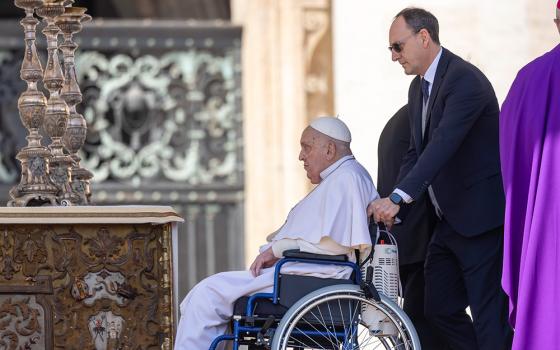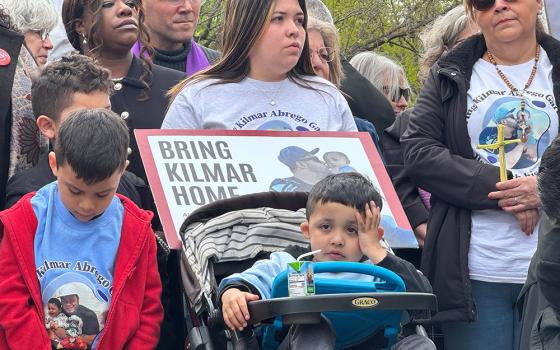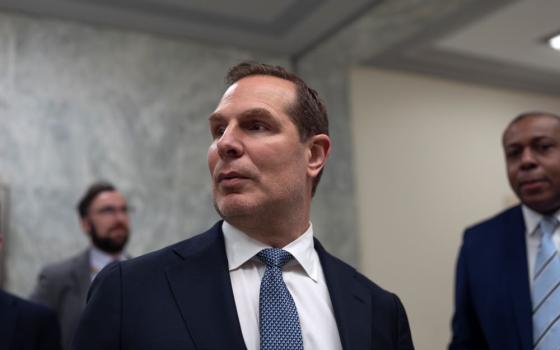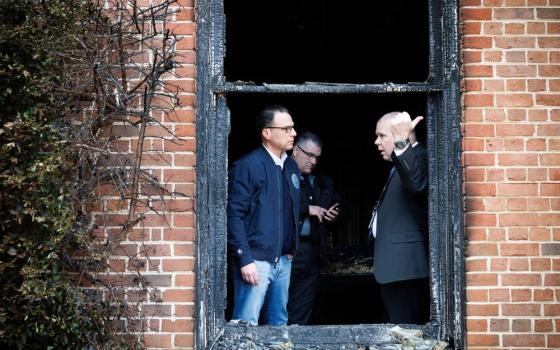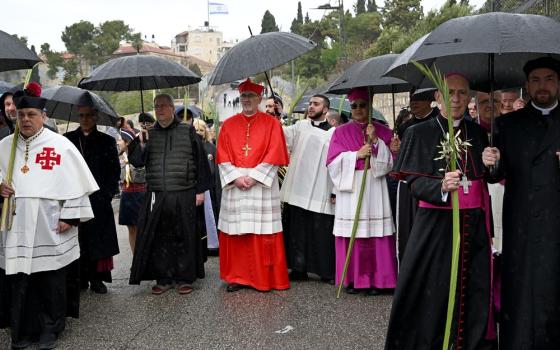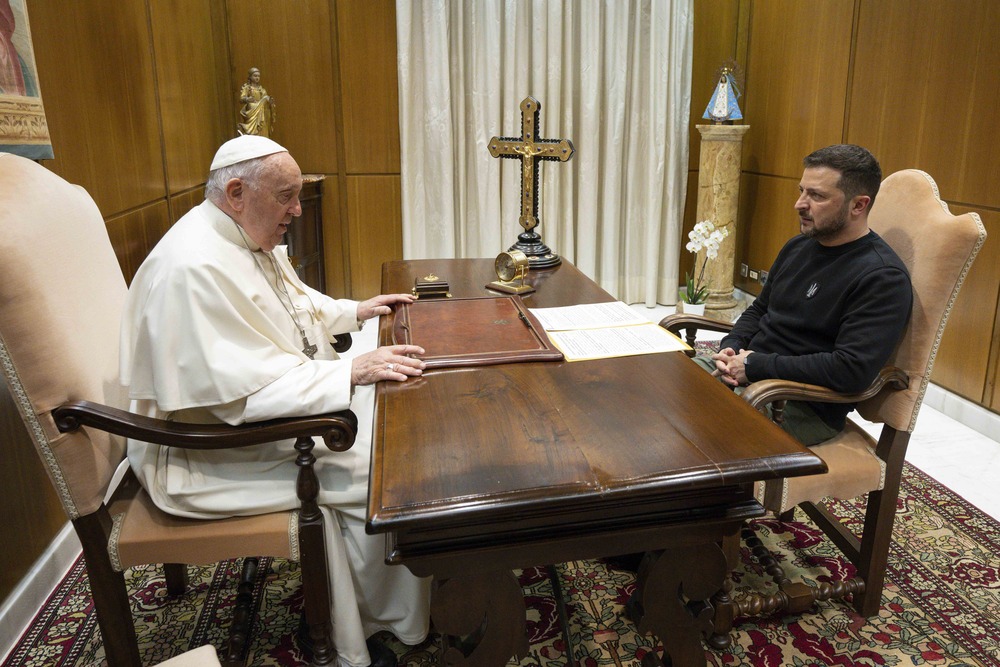
This image made available by Vatican News shows Pope Francis meeting Ukrainian President Volodymyr Zelenskyy during a private audience at the Vatican, May 13, 2023. (Vatican News via AP)
Ukraine’s ambassador to the Holy See, Andrii Yurash, has asked Pope Francis to visit Ukraine almost every time they’ve met for a private audience. Each time, the pope has pointed to a folder resting on his desk containing the formal invitation from Ukrainian officials and said he is waiting "or the appropriate time," Yurash said.
Even though the war between Russia and Ukraine started in 2014, the Russian invasion of Ukraine in February 2022 significantly escalated the conflict and brought it to the forefront of global conversations. More than two years later and after repeated appeals from Ukrainian religious and political leaders, the pope has not personally visited Ukraine.
"When I meet him, and when I have this opportunity, he always tells me one phrase: I’m waiting for the appropriate time when my visit will symbolize a real positive input into the situation," Yurash told Religion News Service on Monday (Aug. 12).
The Ukrainian Embassy to the Holy See is a stone’s throw from St. Peter’s Square. Pictures of Vatican prelates meeting with Ukrainian officials, including President Volodymyr Zelenskyy, fill the walls. Zelenskyy too asked Francis to visit Kyiv before the invasion in 2022 and has since then repeated the invitation to the Holy Father.
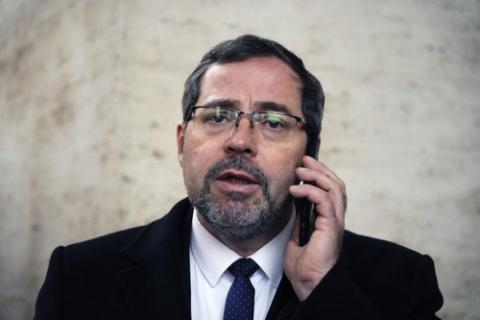
Ukraine’s ambassador to the Vatican, Andrii Yurash, uses his phone prior to the start an interview with The Associated Press at the Vatican, Dec. 2, 2022. (AP/Gregorio Borgia)
For Yurash, a papal visit would signify the "greatest step in the peace building process in Ukraine." Every time the pope has told him he is waiting for the right time to visit Ukraine, the ambassador said, he answered by stating that "anytime you come to Ukraine, it will be the appropriate time, because you will bring the most important thing: You will bring hope. You will bring a new energy. You will bring something unique and a sign of closeness from the Western civilization, from the Western society, a message that we are all with you."
In a 2022 interview with Reuters, Pope Francis had announced he would visit Kyiv only if he could travel to Moscow as well. The desire to avoid taking sides in a conflict reflects a long-standing Vatican approach to diplomacy and the hope of acting as a peace broker.
But the pope’s efforts to remain above the fray have also led to some diplomatic blunders. Speaking to the Italian news outlet Il Corriere della Sera in 2022, the pope suggested NATO was responsible for the Russian invasion of Ukraine and later hinted at imperial interests at play in the ongoing conflict.
In an interview with Swiss broadcaster RSI in March, Francis seemed to encourage Ukraine to embrace the courage of the "white flag" and sit down at the negotiating table. Despite the Vatican’s attempts to provide context for the papal remarks, Ukrainians reacted angrily to the pope’s comments.
While Yurash understands the good intentions of Vatican diplomacy, he was critical of the pope’s efforts to influence the Kremlin and Russian President Vladimir Putin. "Any negotiation can be possible if you have the second side," he said, "but Russia has always been negative, not responding, not being polite, not being positive in any terms."
Pope Francis has spearheaded a diversified effort to bring peace to the region, from official diplomacy, to charitable outlets, to unofficial channels. Leading the official effort is the pope’s No. 2, Vatican Secretary of State Cardinal Pietro Parolin, who visited Ukraine in mid-July for a six-day trip to meet with local officials and religious leaders.
It was the first visit by Parolin since the beginning of the invasion, having previously visited the country in 2016 and 2021. The Vatican’s de facto foreign minister, Archbishop Paul Gallagher, also visited the country in May 2022.
Parolin celebrated the final Mass for Catholic Latin Rite Ukrainians at the Marian sanctuary of Berdychiv, a major Catholic site in the country. The sanctuary has been elevated to a minor basilica, a sign of the Vatican’s recognition of the site where hundreds of Ukrainian faithful have prayed for peace.
He asked for Mary’s intercession in the war and compared the Ukrainian suffering to "the dark hour of Calvary" when Jesus was crucified.
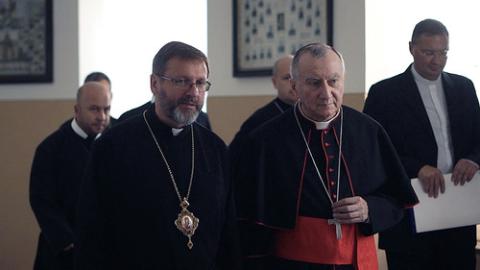
Major Archbishop Sviatoslav Shevchuk of Kyiv-Halych, left, and Cardinal Pietro Parolin meet during a synod of the Ukrainian Greek Catholic Church in Vatican City in 2019. (Courtesy of Ukrainian Greek Catholic Church)
Parolin also visited the Greek Catholic cathedral in Kyiv and met with the major archbishop of the Greek Catholic Church in Ukraine, Sviatoslav Shevchuk, who has been a steady voice for Ukraine’s resistance to Russian aggressions. Parolin also visited Odessa and witnessed firsthand the devastation of the war, meeting with children in the pediatric Okhmatdyt hospital in Kyiv, the largest in the country, which was bombed in July of last year.
Zelenskyy presented Parolin with a medal of order of merit for his efforts in supporting the sovereignty of Ukraine. Their discussions focused on paths to peace but also on the different Christian denominations cohabitating, sometimes tenuously, in the battle-torn country.
Yurash described Parolin’s visit as "successful for both sides," underlining Ukraine’s appreciation for the Vatican’s efforts. "I really hope that at some point, as a consequence of this very important visit, we will have a possibility to greet His Holiness in Ukraine as well."
Parolin seemed more skeptical about a peaceful resolution to the conflict, especially after Ukrainian troops moved into Russia’s Kursk region on Aug. 6. "These are very worrying developments, because it means opening new fronts," Parolin told reporters on Monday. "In this sense, the chances for peace could become increasingly distant."
Pope Francis’ unofficial diplomacy channels are led by his peace envoy, Cardinal Matteo Zuppi, who is not only the president of the Italian bishops’ conference but also a skilled negotiator with experience in conflict resolution. Yurash said Zuppi, who has already met with political leaders in the U.S., China, Russia and Ukraine, has been successful in his efforts.
Zuppi has been involved in negotiating the exchange of hostages and ensuring Ukrainian children be returned to their homes. The cardinal has relied on the influential St. Egidio movement, a lay organization with respected experience in peace building and creating humanitarian corridors for refugees. Yurash said Zuppi is in contact with Russian officials but added that the details of his work are secret.
Advertisement
Pope Francis has continued to issue charitable support to Ukraine through his papal almoner, Cardinal Konrad Krajewski, who has helped provide basic necessities, medicines and funds.
Reflecting on his tenure as ambassador, which began shortly after the start of the full-blown war with Russia, Yurash said he has appreciated the support and help from other state representatives. He worked especially closely with the U.S. ambassador to the Holy See, Joe Donnelly, who presented his credentials to the pope only seven days after Yurash.
Yurash, whose son is enlisted in the Ukrainian army and will soon join the front, said he avoids any contact with the Russian representative to the Holy See. "How can I communicate with the person who, even by his presence here, is a symbol of international terrorism?" he asked.
He said he hasn’t given up hope that the pope will visit his country — but when "the appropriate time" will be for Francis, he said, remains an open question.
